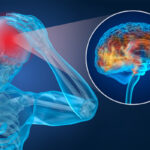
ADHD stands for Attention-deficit/hyperactivity disorder and is a condition manifested by inattention, hyperactivity, and impulsivity. Studies suggest attention-deficit/hyperactivity disorder impacts between 7-9 percent of school-age children. Neurofeedback treatment for ADD/ADHD in children has been proven to significantly improve symptoms in young students, such as the ability to focus on a task and control mood swings.
How common is ADHD?
Attention-deficit/hyperactivity disorder affects an estimated 2 million American children, an average of at least one child in every U.S. classroom. In general, boys with ADHD have been shown to outnumber girls with the disorder by a rate of about three to one. What is more, while signs of ADHD are usually first noticed in early childhood, suffering can continue through adolescence and adulthood.
While there is no specific data on the rates of ADHD in adults, the disorder is sometimes not diagnosed until adolescence or adulthood, and most of the children with ADHD retain symptoms of the disorder throughout their adult lives. (It is generally believed that older individuals diagnosed with ADHD have had elements of the disorder since childhood.)
Oftentimes adults don’t realize that they themselves have ADHD until they learn more about it when their child is diagnosed. Adults with ADHD may have trouble managing time, being organized, setting goals, and holding down a job. If left untreated, ADHD can manifest into other personal challenges, like low self-esteem, substance abuse, mood swings, and relationship problems.
3 Types of ADD/ADHD
Some patients experienceAttention-deficit/hyperactivity disorder predominantly as the inability to focus attention on a task. Others find their primary difficulty is controlling impulsive behavior. And still others have problems with both focus and impulsivity.
Inattentive
Patients who have trouble focusing have these symptoms:
- Failure to notice details resulting in careless mistakes in schoolwork, work, or other activities
- Inability to concentrate on tasks or leisure activities
- Not seeming to be listening when spoken to directly
- Difficulty in following directions or completing schoolwork, chores, or duties in the workplace
- Problems organizing their work and activities
- Avoidance of sustained mental effort
- Losing track of tools or supplies necessary to complete an assignment at school or work
- Being easily distracted by outside stimuli
Impulsive/Hyperactive Behavior
Others suffering from impulsive behavior exhibit the following symptoms:
- Fidget with their hands or feet or squirm in their seat
- Leave their seat in situations in which remaining seated is expected
- Move excessively or feel restless during situations in which such behavior is inappropriate
- Have difficulty engaging in leisure activities quietly
- Are “on the go” or act as if “driven by a motor”
- Talk excessively
- Blurt out answers before questions have been completed
- Have difficulty awaiting their turn
- Interrupt or intrude on others
A Combination of Inattentive/Hyperactive/Impulsive Symptoms
- Those with the third and most common type of ADHD, have a combination of the inattentive and hyperactive/impulsive symptoms.
- The combined type of ADHD is the most common in elementary school-aged boys.
ADD/ADHD in Adults
Symptoms of ADD/ADHD may change as a person gets older. They include:
- Chronic lateness and forgetfulness
- Anxiety
- Low self-esteem
- Problems at work
- Trouble controlling anger
- Impulsiveness
- Substance abuse
- Disorganization
- Procrastination
- Easily frustrated
- Chronic boredom
- Trouble concentrating when reading
- Mood swings
- Depression
- Relationship problems
How is ADD/ADHD diagnosed?
A diagnosis of ADD/ADHD is made when an individual displays at least six symptoms from either of the above lists, with some symptoms having started before age 7. Clear impairment in at least two settings, such as home and school or work, must also exist. Additionally, there must be clear evidence of clinically significant impairment in social, academic, or occupational functioning.
How Neurofeedback Therapy Treats ADHD
Neurofeedback allows the patient to see the effect of their own brain activity on a video screen. This in turn, helps the patient learn how to change that activity simply by focusing on doing so.
According to the latest research, the brains of patients with ADHD appear to produce an insufficient amount of beta waves and an excess of theta waves. Higher-frequency beta waves are associated with the ability to focus and concentrate on a task while lower-frequency theta waves are produced when we daydream or feel drowsy. For example, when a child is rewarded with verbal praise or acknowledgement of achievement for producing more beta waves during neurofeedback sessions, the child can learn how to produce these waves at will. And he or she can continue to use this skill to focus more effectively in the classroom and at home.
Many patients have experienced positive results from neurofeedback treatment options. For more details, please call Chicago Mind Solutions at (847) 656-5080 or (847) 250-9881 and get started!




